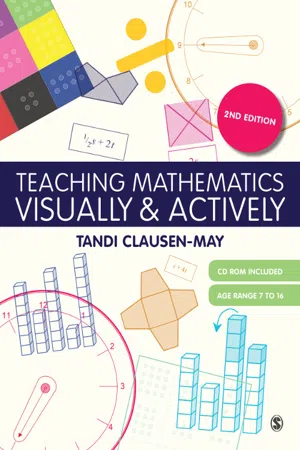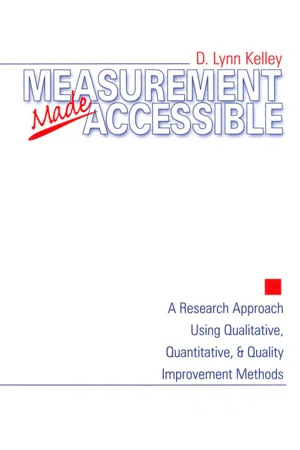Comparing Data
Comparing data involves analyzing and evaluating different sets of information to identify similarities, differences, patterns, and trends. This process often includes using mathematical techniques such as calculating measures of central tendency, dispersion, and correlation to make meaningful comparisons between data sets. By comparing data, mathematicians can draw conclusions and make informed decisions based on the information at hand.
5 Key excerpts on "Comparing Data"
- eBook - ePub
- Tandi Clausen-May(Author)
- 2013(Publication Date)
- SAGE Publications Ltd(Publisher)
...C HAPTER 11 Data Handling Some key concepts We can collect data and represent each data point in different ways. A whole data set can be displayed with different sorts of graphical representation. The mode and median of a set of data can be found by arranging and comparing the data points. The mean of a set of data is just ‘what it would be if all the data values were equal’. Percentages can be useful to compare proportions, but they may disguise sample sizes that are too small to be meaningful. a) Seeing the Data Data handling has a rather special place in the school mathematics curriculum. It is generally agreed that an understanding of statistics and their representation is essential in a literate and numerate society, if only to help us to distinguish the ‘damn lies’ from the ‘statistics’ in political speeches and newspaper articles. But data handling is a relative newcomer to the school curriculum, and this may be why it is often approached in a different way to the rest of mathematics. Statistics, after all, have to be about something – and that ‘something’ may affect the way the subject is presented and discussed. It may provide a context for the lists and tables of figures, and this can help to give them some meaning. Mathematics textbook writers and examiners are often happy enough to require learners to do a calculation, or to find a length or an angle in an abstract diagram, with no context. But if learners are asked to draw a bar chart, or to find the mean of a set of figures, then this must be in order to represent and process some data – and that data is likely to have a context. It may even relate to observations or results that the learners themselves have collected. Generally speaking, school mathematics exercises in data handling are more likely than those in other areas of the curriculum to be in context. The raw data itself – the lists of figures and tables – can be quite daunting...
- eBook - ePub
- Rafael Perera, Carl Heneghan, Douglas Badenoch(Authors)
- 2011(Publication Date)
- BMJ Books(Publisher)
...If you’re going to interpret what your data are telling you, and communicate it to others, you will need to summarize your data in a meaningful way. Typical mathematical summaries include percentages, risks and the mean. The benefit of mathematical summaries is that they can convey information with just a few numbers; these summaries are known as descriptive statistics. Summaries that capture the average are known as measures of central tendency, whereas summaries that indicate the spread of the data usually around the average are known as measures of dispersion. The arithmetic mean (numeric data) The arithmetic mean is the sum of the data divided by the number of measurements. It is the most common measure of central tendency and represents the average value in a sample. To calculate the mean, add up all the measurements in a group and then divide by the total number of measurements. The geometric mean If the data we have sampled are skewed to the right (see p. 7) then we transform the data using a natural logarithm (base e = 2.72) of each value in the sample. The arithmetic mean of these transformed values provides a more stable measure of location because the influence of extreme values is smaller. To obtain the average in the same units as the original data – called the geometric mean – we need to back transform the arithmetic mean of the transformed data: The weighted mean The weighted mean is used when certain values are more important than others: they supply more information. If all weights are equal then the weighted mean is the same as the arithmetic mean (see p. 54 for more). We attach a weight (w i) to each of our observations (x i): The median and mode The easiest way to find the median and the mode is to sort each score in order, from the smallest to the largest: The median is the value at the midpoint, such that half the values are smaller than the median and half are greater than the median...
- eBook - ePub
Measurement Made Accessible
A Research Approach Using Qualitative, Quantitative and Quality Improvement Methods
- D . Lynn Kelley(Author)
- 1999(Publication Date)
- SAGE Publications, Inc(Publisher)
...QUANTITATIVE MEASUREMENT s explained in Chapter 2, quantitative measurement is objective, quantifiable measurement or measurement with numbers. When qualitative measurement was discussed, the data used were often nominal or ordinal. For quantitative measurement, the data are usually interval or ratio. When performing quantitative measurement, the sampling methods, data analysis procedures, and interpretation guidelines generally originate from statistics. Statistics is the science of collecting, describing, analyzing, and interpreting data. COLLECTING AND DESCRIBING The collection of data is reviewed in Chapters 4 and 5 along with a discussion of sampling and data-gathering methods. The remainder of the statistics definition addresses what to do with the data after they have been collected. Generally, researchers want to describe the data. Describing data involves three specific areas of statistics: 1. Graphs 2. Measures of central tendency 3. Measures of dispersion Graphing gives a visual display of data and helps the viewer to absorb information quickly and to readily see patterns. It is discussed in detail in Chapter 11. Measures of central tendency help to summarize data and provide a reference point for information. The three most common measures of central tendency—the mean, median, and mode—were presented in Chapter 1. Measures of Dispersion Measures of dispersion provide information about the variability of the data. Large measures of dispersion indicate that the data are widely distributed, whereas small measures of dispersion show that the data are very similar to each other. Range The range is the easiest measure of dispersion to calculate. It is the difference between the largest and the smallest value in the data set...
- eBook - ePub
Statistical Data Analysis Explained
Applied Environmental Statistics with R
- Clemens Reimann, Peter Filzmoser, Robert Garrett, Rudolf Dutter(Authors)
- 2011(Publication Date)
- Wiley(Publisher)
...Such comparisons facilitate a better understanding of the cycling and fate of elements in and between the different compartments of the ecosystem. 8.1 Comparing Data in tables Because it is not usually possible to compare large data sets data item by data item, it is necessary to employ some kind of data summary. Most “classical” methods for Comparing Data populations are built around the MEAN and the SD, and thus the “location” or “central value” and “spread” of each variable. Most data tables summarising a data set report at least these two parameters, hopefully together with the data set size. It can also be informative to report the minimum (MIN) and maximum (MAX) values observed and certain percentiles of the data set (see summary table in Section 4.6). It has been demonstrated that MEAN and SD are usually not good descriptors for applied geochemical and environmental data. Thus a better choice for reporting in a table should be MEDIAN and MAD; MEAN and SD can be provided in addition because so many scientists still use these classical measures and they might want to make data set comparisons. A large difference between the MEDIAN and MEAN (environmental data will usually show a higher MEAN than MEDIAN indicating a right skew) will show that the data are strongly skewed, and/or there are some extreme values, biasing the estimates of the MEAN and SD. In the simplest case of a table Comparing Data averages for a project, sample material is compared with averages of the same material collected elsewhere. Table 8.1 shows an example of such a table using a selection of the elements from the Kola Project C-horizon data (<2 mm fraction, aqua regia extraction)...
- eBook - ePub
Understanding Research Methods
A Guide for the Public and Nonprofit Manager
- Donijo Robbins(Author)
- 2017(Publication Date)
- Routledge(Publisher)
...The best way to learn all the different editing features is to experiment with the graphics. 10.6 Summary The statistics and graphics presented in this chapter help us evaluate and describe single variables. Graphics are an alternative to tables and complementary to the prose of a research report. They provide the reader—the decision maker—with a quick and easy illustration of what is happening. The three different measures of central tendency are all valuable measures, but their usefulness depends on the level of data, the values of each of the measures of central tendency, and the distribution of the data. Table 10.6 summarizes the univariate statistics discussed in this chapter. Figure 10.27 Assigning labels to the chart’s legend. Figure 10.28 Illustration of formatting options. Table 10.6 Definitions and Appropriate Levels of Data for Selected Univariate Statistics Measure Definition Level of Data Interquartile range The difference between the first and third quartiles Ratio Mode Observation occurring most often All levels Median Observation in the middle Ordinal, ratio Mean Arithmetic average of all values Continuous, ratio Percentiles The division of data into 100 equal parts Ratio Quartiles The division of data into four equal parts Ratio Range The difference between the highest and lowest values in a set of observations Ratio Frequency distributions Tabular summary of the observations All levels Histograms Graphical summary of the frequency. distribution Ratio Variance The average squared deviation about the mean Ratio Standard deviation The average deviation of values about the mean Ratio Overall, the mode is beneficial for all levels of data, but only when one or two modes are present. The median can be used with ordinal and ratio data, and the mean is appropriate only for ratio data...




